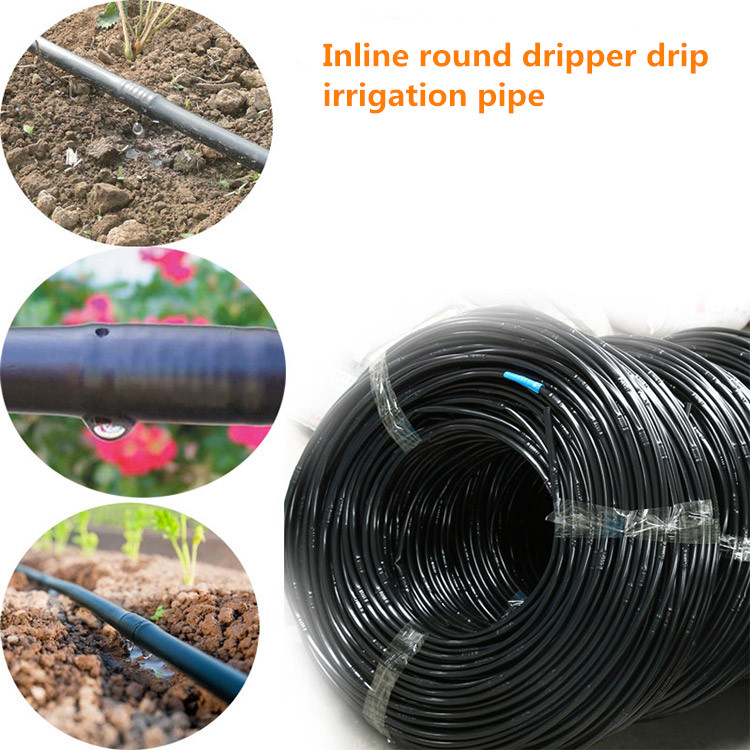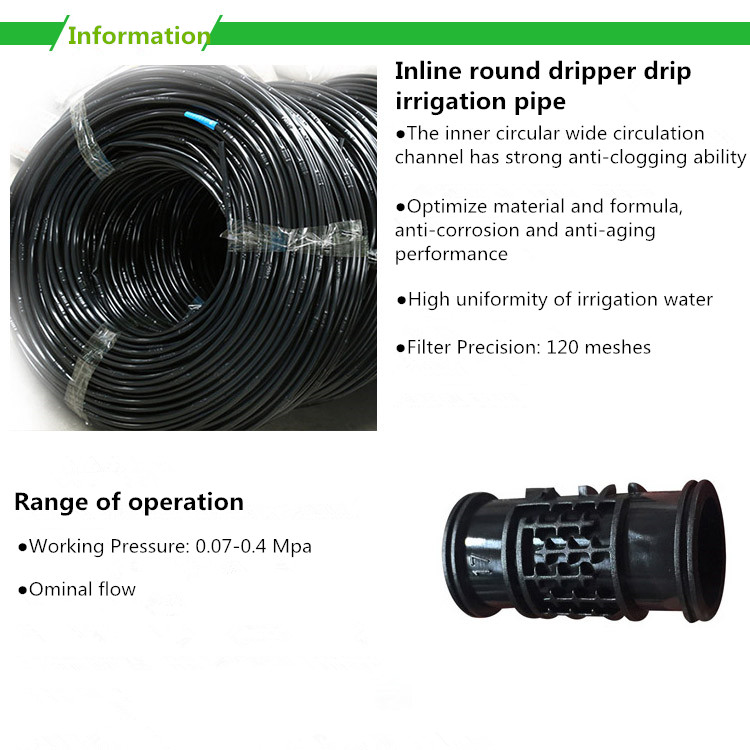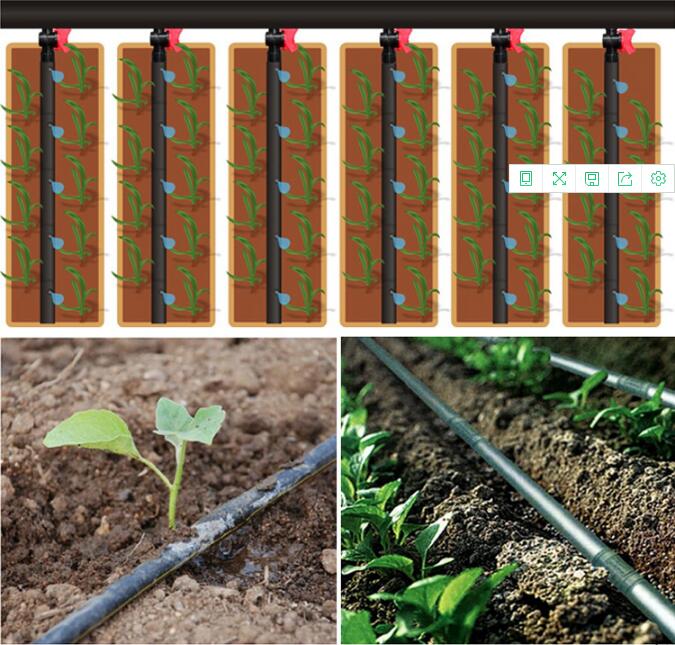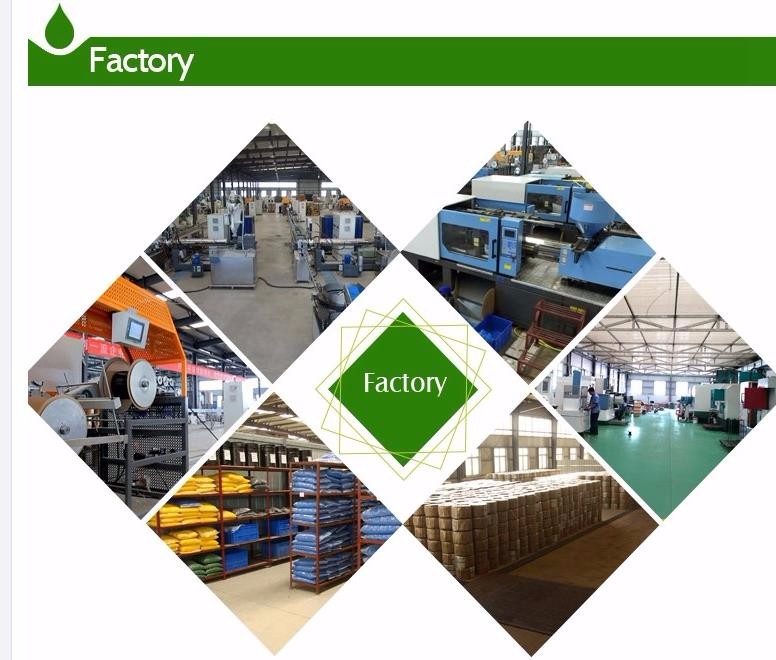Product
Drip irrigation pipe is an important irrigation device in drip irrigation system. According to the requirements of crop water demand, through the low-pressure pipeline system and the irrigator installed on the capillary tube, the nutrients needed for water and crops are dropped into the crop evenly and slowly. Root zone soil.
Drip irrigation pipe is an important irrigation device in drip irrigation system. According to the requirements of crop water demand, through the low-pressure pipeline system and the irrigator installed on the capillary tube, the nutrients needed for water and crops are dropped into the crop evenly and slowly. Root zone soil.

1. According to the way of water discharge:
Pressure compensated drip irrigation pipe and non-pressure compensation drip irrigation pipe.
2. According to the structure can be divided into:
In-line drip irrigation pipe and inter-tube drip irrigation pipe.
Drip irrigation is a full pipeline water delivery and local micro-irrigation to minimize water leakage and loss. At the same time, because the water required for the root zone of the crop can be supplied in a timely manner, there is no problem of loss of peripheral water, and the utilization efficiency of water is greatly improved. Irrigation can be easily combined with fertilization, that is, the fertilizer is dissolved and then poured into the irrigation system. Because the fertilizer is combined with the irrigation water, the fertilizer nutrient is directly and evenly applied to the root layer of the crop, realizing the synchronization of water and fertilizer, greatly improving the effective use of fertilizer. The rate, at the same time, is due to small-scale local control, micro-irrigation, less water and fertilizer leakage, so it can save the amount of fertilizer application. The use of fertigation techniques provides convenience for crops to replenish expensive trace elements in a timely manner and avoids waste. The drip irrigation system is only controlled manually or automatically by the valve, and combined with fertilization, it can significantly save labor input, reduce production costs, improve resource utilization, and ensure full coverage irrigation.
2. Control temperature and humidity
In the greenhouse of traditional furrow irrigation, the amount of water is large at one time, and the surface is kept moist for a long time. Not only the shed temperature and ground temperature decrease too fast, but the temperature rises slowly, and the evaporation increases. The indoor humidity is too high, which may lead to vegetable or flower pests and diseases. Because drip irrigation is a local micro-irrigation, most of the soil surface is kept dry, and the dripper supplies water to the root soil layer evenly and slowly, which has obvious effects on maintaining and recovering the ground temperature, reducing water evaporation and reducing indoor humidity. Under the membrane drip irrigation, the drip irrigation pipe (belt) is placed under the membrane, the effect is better. In addition, due to the convenient operation, drip irrigation can implement high-frequency irrigation, and the outlet hole is small, the flow rate is slow, the time of each irrigation is long, and the soil moisture variation is small, so the soil in the root zone can be controlled to stay close to the most. Suitable for the growth of vegetables, flowers and other humidity. By controlling the indoor air humidity and soil moisture, the occurrence of pests and diseases can be significantly reduced, and the amount of pesticides can be reduced.
3. Maintain soil structure
Under the effect of the large irrigation volume of traditional gully irrigation, the soil of the facility is subject to more erosion, compaction and erosion. If the soil is not ploughed in time, it will lead to severe compaction, decreased ventilation and a certain degree of damage to the soil structure. The drip irrigation is a kind of micro-irrigation, and the water slowly and uniformly penetrates into the soil, which can maintain the soil structure and form a suitable soil water, fertilizer and heat environment.
4. Improve quality, increase production and increase efficiency
Since the application of drip irrigation reduces the application of water and fertilizer, pesticides and the occurrence of pests and diseases, the quality of the products can be significantly improved. In short, compared with traditional irrigation methods, greenhouses or greenhouses use drip irrigation to greatly increase product yield, increase morning market time, and reduce the cost of water and fertilizer, pesticide application and labor, so economic and social benefits. Significant. Facility gardening drip irrigation technology adapts to the requirements of high-yield, high-efficiency and high-quality modern agriculture, which is the root cause of its existence and promotion.

1. Suitable for field crops, orchards, and tree greening in areas where water resources and labor are scarce.
2. Widely used in greenhouses, greenhouses, open planting and greening projects.

Welcome to our company website, thank you for your letter, we will give you a reply in the first time, would you please leave your information and contact way!